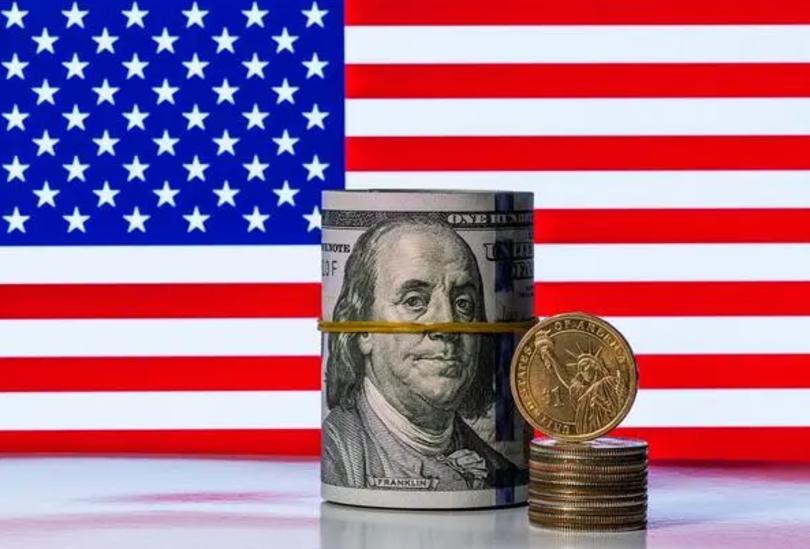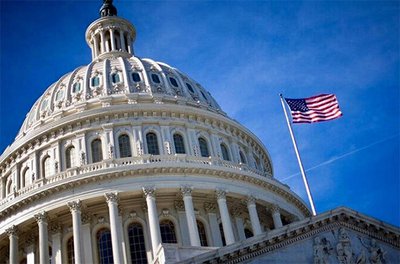
U.S. core inflation data will be released on Wednesday, and according to the survey, they expect U.S. inflation to pick up in October, with the core PCE index rising 0.3 percent month-on-month and the headline inflation rate rising 0.2 percent month-on-month. Fed Chairman Jerome Powell had expected core PCE to rise 2.8 percent year on year. The analysis believes that multiple factors have boosted the inflation index to "high". The yield on the 10-year Treasury note has risen by about 14 basis points since Trump's victory on November 6, indicating that investors are worried that possible policy changes in Trump's second term, such as bigger budget deficits, mass deportations of illegal immigrants and huge tariffs, will lead to a return of inflation.
The continued high inflation in the United States and the uncertainty of interest rate cuts also have a very complex impact on the economy. First, the direct impact on the US economy, interest rate cuts into the "slow lane" means that the degree of monetary policy easing will be weakened, which may slow down the speed of economic recovery and increase the downward pressure on the economy. However, a moderate level of interest rates can also help avoid excessive risk-taking in the financial market and maintain the stability of the financial market, thus supporting economic growth to a certain extent. In the context of high inflation, the Fed chose to cut interest rates into the "slow lane" in order to find a balance between stimulating economic growth and controlling inflation. While cutting rates could push inflation higher further, cutting rates too quickly could also lead to an accumulation of risks in financial markets, so the Fed needs to weigh this carefully. The implications for financial markets of moving into the slow lane are mixed. On the one hand, a higher interest rate environment could attract more capital into US assets, pushing up the value of the dollar and US Treasury yields, which would help enhance the attractiveness of US financial markets. On the other hand, prolonged high interest rates may also lead to increased volatility in financial markets and increase investment risks. For consumers, high inflation means higher living costs and lower purchasing power. And cutting interest rates into the "slow lane" may cause lending rates to remain high, limiting the growth of consumption and investment. For businesses, the high interest rate environment increases the cost of financing, potentially curbing their willingness to invest and expansion plans.
The second is the indirect impact on the global economy. As one of the most important reserve currencies in the world, the exchange rate fluctuation of the US dollar has a profound impact on the global monetary environment. The appreciation of the US dollar may lead to the depreciation of other currencies, increasing the depreciation pressure on some emerging market countries and the risk of capital outflow. The Fed's move into the slow lane could trigger a chain reaction in global financial markets. In a high interest rate environment in the United States, capital may flow more into the U.S. market, resulting in relatively tight funds in other markets around the world. That could weigh on emerging market stocks and bonds, adding to volatility. A stronger dollar could make U.S. exports more expensive and reduce its international competitiveness. At the same time, currency depreciation in other countries may make their exports relatively cheaper, increasing their share of exports. This could have some impact on global trade patterns.
The third is the impact on the financial market, the expectation of the Federal Reserve to slow down the pace of interest rate cuts has led to a continuous rise in the US dollar, and the US dollar index has climbed. This is largely due to market expectations that the Federal Reserve is likely to maintain the current high interest rate environment. At the same time, the yield on the 10-year Treasury note also rose, reflecting reduced demand for U.S. government debt, and Treasury prices fell. The US stock market has retreated in anticipation of a slowdown in the pace of interest rate cuts by the Federal Reserve, especially the share prices of high-valuation sectors such as technology stocks have fallen significantly. This may be related to the higher cost of capital in a high-interest rate environment, the increased difficulty of corporate financing, and the revision of investors' expectations for future earnings growth. The Fed's policy changes have an impact not only on the U.S. economy, but also on global financial markets. The appreciation of the US dollar means the depreciation of other currencies, which may trigger currency depreciation pressure and capital outflow risk in some emerging market countries.
To sum up, the advent of the era of "high inflation and slow growth" in the United States and the phenomenon of interest rate cuts entering the "slow lane" have many impacts on the economy. Countries need to take corresponding countermeasures and policy adjustments to address these challenges and uncertainties. At the same time, in the face of this change, investors should maintain flexible investment strategies, seize the opportunities brought by market fluctuations, and reasonably control risks.

In early December, US stocks staged their most dramatic intraday reversal in months. Driven by the dual positive catalysts of chip giant NVIDIA's better-than-expected earnings report and a "Goldilocks" nonfarm payrolls report, the S&P 500 index surged as much as 1.9% within the first hour of trading.
In early December, US stocks staged their most dramatic int…
On December 5, 2025, the European Union fined Musk's social…
Since October 2025, there has been a week of intense fighti…
On the global economic stage of 2025, the U.S. economy is s…
Recently, the head of Apple's artificial intelligence and t…
On December 5, 2025, the Office of the Compilers of the Cur…